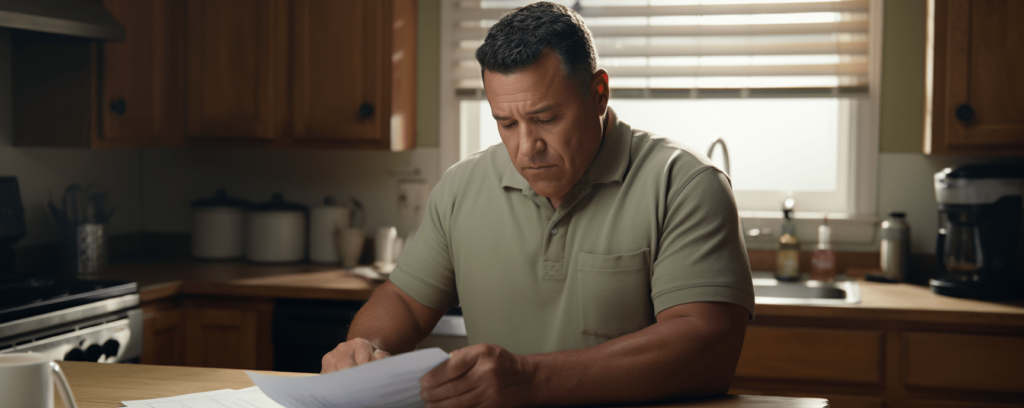The Importance of Medical Documentation for SSDI
When it comes to securing Social Security Disability Insurance (SSDI), your medical documentation serves as the backbone of your application. It's not just a formality; it's the evidence that demonstrates you've worked hard and are facing challenges that make it difficult to continue in that capacity.
🔔 FYI: This article provides a general overview; your specific situation may vary. Always refer to the Social Security Administration's official guidelines for the most up-to-date information.
Types of Medical Documentation: The Essentials
You've spent years in the workforce, and now it's crucial to compile the right set of documents to validate your SSDI claim. Here's what you absolutely need:
- Clinical Examinations
- Treatment Plans
- Lab Results
Medical Records from Your Primary Care Physician
Your long-term relationship with your primary care doctor isn't just good for holiday cards; it's the cornerstone of your SSDI application. These records should include:
- Clinical Examinations: Routine checks that detail the nature and extent of your disability.
- Treatment Plans: Specific measures recommended for managing your condition.
- Lab Results: This could range from blood tests to MRIs.
🔥 Hot Tip: Organize these records chronologically to make it easier for evaluators to understand your medical history.
Hospital and Emergency Records
If you've had to go to the hospital or the emergency room, these records are more than just paperwork; they're concrete proof of the severity of your condition.
Mental Health Records
Mental health is as significant as physical health when it comes to SSDI. Don't overlook records from a psychiatrist or counselor.
Medication Lists
Keep a meticulous list of all medications prescribed, along with any observed side effects. This information contributes to a fuller understanding of your condition.
📕 Story Time: Jane had all her medical records but forgot to include her medication list initially. The absence of this small yet crucial detail delayed her application by weeks.
How to Organize Your Medical Documentation
Organization isn't just for the obsessively neat among us; it's a crucial step in ensuring that your application is as strong as possible. Consider using a dedicated folder or a digital system to keep track of your documents. It might seem like a small detail, but in an application process where details can make or break your success, it's a step you don't want to skip.
Common Mistakes to Avoid When Compiling Your Medical Documentation for SSDI
We all make mistakes, but when it comes to your SSDI application, even a small oversight can lead to delays or, worse, a denial. Here are some common pitfalls to watch out for:
- Incomplete Records: Missing out on a single report or medical test could weaken your application.
- Outdated Information: Ensure that all the medical records are current and up-to-date. An old address or an outdated diagnosis could raise questions.
- Ignoring Correspondence: Sometimes, physicians or specialists will send letters with important updates on your condition. Make sure these are included in your application.
- Not Double-Checking: Always double-check that you've included every necessary document before submitting. It's easy to overlook something in the stress of the application process.
🔥 Hot Tip: Create a checklist of all required documents and tick them off one by one as you add them to your application. This simple action can save you a lot of headaches later.
Securing Letters from Medical Professionals: A Game-Changing Move
Yes, medical records are vital, but letters from your healthcare providers can add depth and context to your application. These aren't your everyday doctor's notes; these are detailed accounts that specifically discuss your limitations and the challenges you face daily.
Why You Need These Letters
Think of these letters as character witnesses in a court case. They provide a firsthand account of your condition and can bridge any gaps left by your medical records. This could be the difference between a successful application and a denial, making them worth their weight in gold.
⭐️ You May Also Be Interested In: If you have these detailed medical letters, they may also be useful for other benefits like Supplemental Security Income (SSI).
Who Should Write These Letters?
Ideal candidates for writing these letters are medical professionals who have been involved in your treatment. This could be your primary care doctor, specialists you've seen, or even a long-term physical therapist. The more these individuals know about you, the more compelling their letters will be.
The Role of Non-Medical Documents
While medical documentation is the cornerstone of your SSDI application, don't underestimate the power of non-medical documents. These can include:
- Work History
- Personal Statements
- Financial Records
Staying On Top of Deadlines
The SSDI application process has deadlines tighter than a drum. Missing one could set you back months, or worse, lead to a denied claim. Use calendars, set reminders, do whatever it takes to keep these dates front and center.
🔥 Hot Tip: Some online platforms allow you to set up reminders for important SSDI deadlines. Use them to your advantage.
Keeping Up With Changes: Don’t Get Left Behind
The SSDI process isn't set in stone; requirements can change. Stay updated with any changes to documentation needs by regularly checking the Social Security Administration's guidelines or consulting with a legal advisor familiar with SSDI. It's a straightforward way to ensure that your application remains strong over time.
Follow Up, Follow Up, Follow Up
Once you've submitted your application, don't just wait around for a reply. Contact the Social Security Administration to confirm receipt of your documents. Also, if your condition changes or worsens, update your file immediately. Your vigilance could be a defining factor in your application’s success.
Handling Rejections: It's Not the End
If your application is denied, it's easy to feel defeated. But remember, you've worked hard and are deserving of this support. A denial is a setback, not a final judgment. Many initial applications are denied, but that doesn't mean you should give up.
What to Do After a Denial
First, read the denial letter carefully to understand why your application was rejected. Then gather additional supporting documents or letters to strengthen your case. If you feel overwhelmed, consider seeking the help of a legal advisor experienced in SSDI claims. They can guide you through the appeal process, enhancing your chances of success.
🔔 FYI: A denial is not the end of the road. You have the right to appeal, and many successful SSDI recipients have had to go through this process.
You've Earned This
You've put years into the workforce, and now it's time to make sure you receive the SSDI benefits you're entitled to. The documentation may seem overwhelming, but with careful planning and attention to detail, you're well-equipped to handle it. After all, you’ve faced greater challenges; this is another hurdle you can clear.
💡 Final Thoughts: The SSDI application process is stringent but navigable. Organize your documents, secure supporting letters, and follow up diligently. Your due diligence will pay off.
👉 Next Steps: Armed with this knowledge, you're ready to put together a strong SSDI application. If you found this guide helpful, consider sharing it with others who are in the same boat. Remember, information is power, and you've got this!




